2018 Adventures
I can hardly believe that it is our last 2 days in San Francisco. We have walked our little feet off and not only visited the places that I have been previously, but have started to explore areas that I have never been too. An I have a great travel partner to join in the fun.
Today we are going to check off a few more sights around town and really make use of the local bus (MUNI) system here in town.
First stop - Lombard Street
We walked over to the other cable car stop by the (Mason Cable Car
brenda stanger
104 chapters
16 Apr 2020
San Francisco
Day 5 - Checking out the Town
I can hardly believe that it is our last 2 days in San Francisco. We have walked our little feet off and not only visited the places that I have been previously, but have started to explore areas that I have never been too. An I have a great travel partner to join in the fun.
Today we are going to check off a few more sights around town and really make use of the local bus (MUNI) system here in town.
First stop - Lombard Street
We walked over to the other cable car stop by the (Mason Cable Car
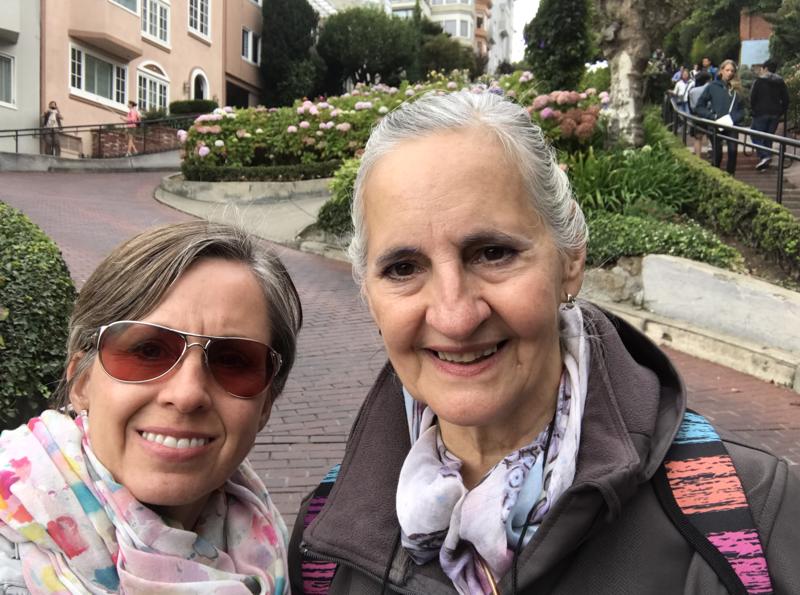
Line) Maritime Museum and headed up the hill to check out Lombard Street. It is early in the day so luckily it wasn't too busy yet.
Lombard Street is an east–west street in San Francisco, California that is famous for a steep, one-block section with eight hairpin turns. Stretching from The Presidio east to The Embarcadero (with a gap on Telegraph Hill), most of the street's western segment is a major thoroughfare designated as part of U.S. Route 101. The famous one-block section, claimed to be "the crookedest street in the world", is located along the eastern segment in the Russian Hill neighborhood. It is a major tourist attraction, receiving around two million visitors per year and up to 17,000 per day on busy summer weekends.
Second stop - The Cable Car Museum
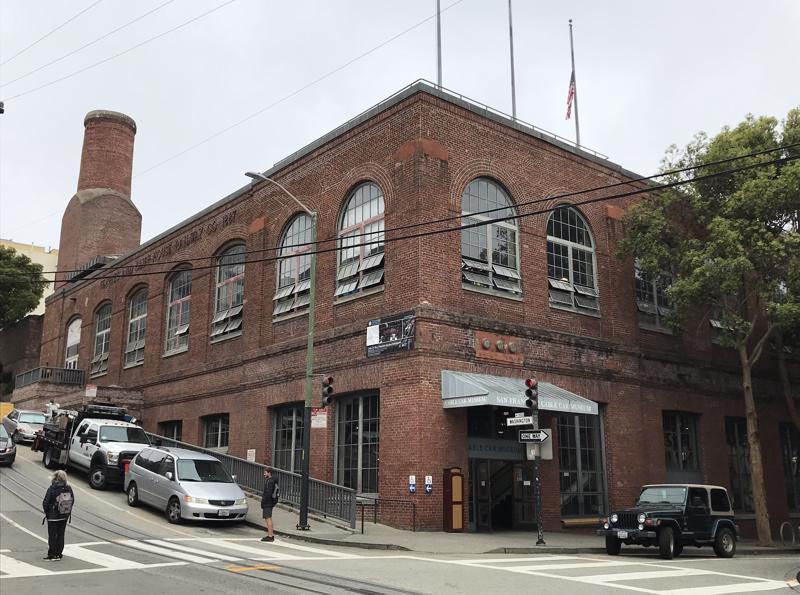
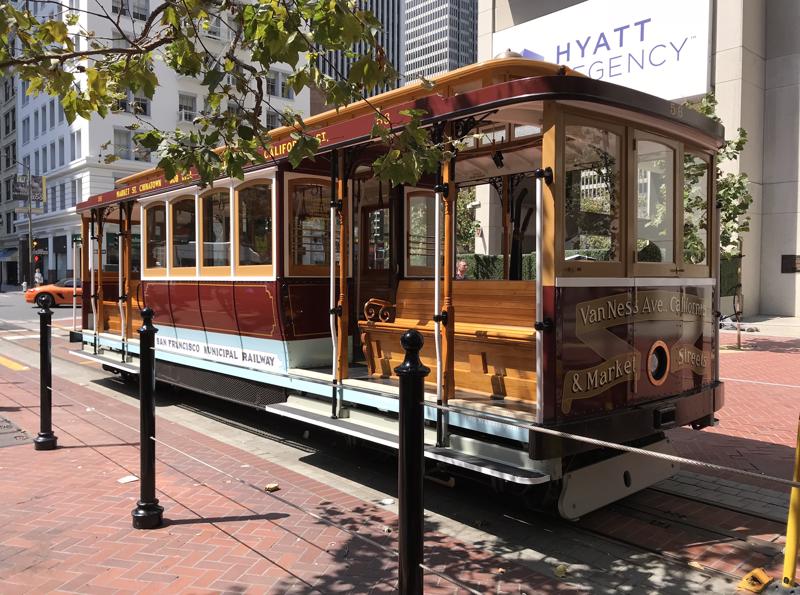
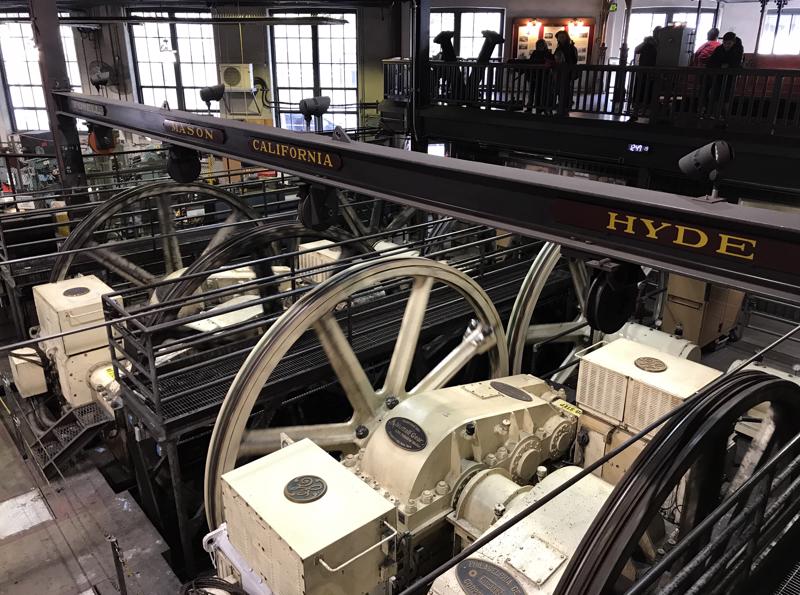
Back up the Lombard Street hill (yes a million steps to the top, but man is it worth it!) and back to the Cable Car stop. We travelled towards china town and downtown on the cable car and got off at the Cable Car Museum. You can learn about the inventor, technologies, builders, rapid expansion, near loss and the ongoing efforts to save and rebuild the cable cars of San Francisco. The Museum houses a collection of historic cable cars, photographs, mechanical displays. The best part is that it is free for the public to enter due to the non-profit organization that keeps the place running. A must see for all those who visit San Francisco and ride the cable cars.
Third Stop - The Painted Ladies
One of the most photographed locations in San Francisco, Alamo Square's famous "postcard row" at Hayes and Steiner Streets is indeed a visual treat. The regular tourist might not know much about why these homes are so special, so a local writer unearthed some
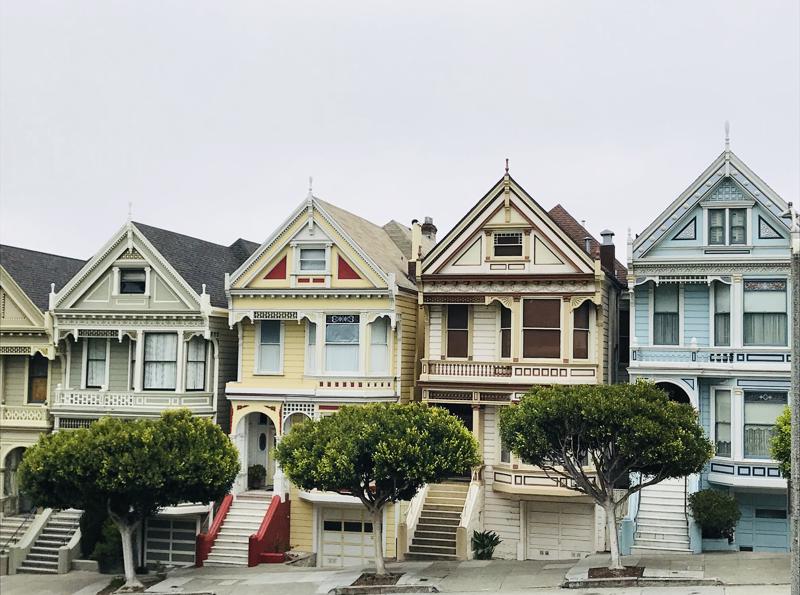
facts about these unique buildings that they thought were totally illuminating (26 in total, I've only listed a few).
1. Calling this row of houses the “Painted Ladies” is actually quite recent. It was first coined in 1978 by writers Elizabeth Pomada and Michael Larsen in their book Painted Ladies – San Francisco’s Resplendent Victorians.
2. The term “Painted Ladies” isn’t even special to this row of houses. It actually refers to any set of Victorian or Edwardian houses that use three or more colors to show off the architectural details of their design.
3. Therefore, San Francisco isn’t the only home of Painted Ladies. There are other ones in Baltimore, St. Louis, Cincinnati, Toledo, Ohio and the city of Cape May, New Jersey.
4. The Painted Ladies were constructed between 1892 and 1896, meaning they survived the 1906 earthquake.
5. There’s a tiny museum on the top floor of the second to last house in the row. Items on display include a ticket from the opening of the Golden Gate Bridge, 100-year-old wedding cake tops, a photo of people gathered in Alamo Square park as the city burned after the 1906 earthquake, and dresses and blouses from the 1800s.
6. Novelist Alice Walker (author of The Color Purple) lived in one of the Painted Ladies at one point.
7. The Painted Ladies are symbolic of the Gold Rush Era. After all that new money came in, San Francisco wanted to show it off via grand, opulent houses. The designs leaned toward the Queen Anne style—fancy, flashy combinations of bay windows, turrets, and decorated rooflines.
8.The specific architectural details that set the Queen Anne-style Painted Ladies apart from other houses include overhanging eaves and detailed brackets, a round, dominant corner tower, gingerbread-style gables, a small porch covering the primary entrance area, differing wall textures, including patterned wood shingles shaped into varying designs, painted classical columns, spindles and balustrades, cutaway bay windows, and intricate stain-glass paneling.
Fourth Stop - Castro District
So after a small walk around Alamo Square and a visit to the local dog area, we wandered 2 blocks south to catch our bus to Castro.
The Castro District, commonly referenced as The Castro, is a
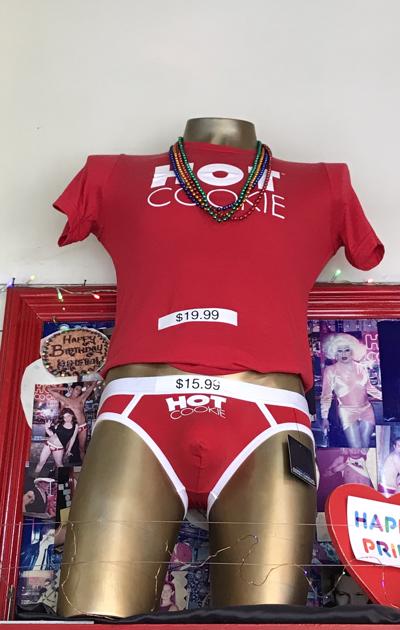
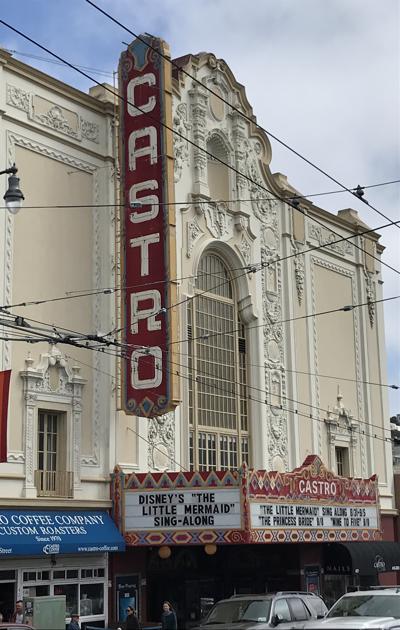
neighborhood in Eureka Valley in San Francisco. The Castro was one of the first gay neighborhoods in the United States. Having transformed from a working-class neighborhood through the 1960s and 1970s, the Castro remains one of the most prominent symbols of lesbian, gay, bisexual, and transgender (LGBT) activism and events in the world.
By 1973, Harvey Milk, who would become the most famous resident of the neighborhood, opened a camera store, Castro Camera, and began political involvement as a gay activist, further contributing to the notion of the Castro as a gay destination.
A stop in Castro isn't complete without a stop into Hot Cookie. Hot Cookie is one of those places that people tell you go in SF. It is in Castro district, and it is a small counter-serve bakery, offering homemade cookies. Inside is very vibrant and colorful with lots of red, including red underpants that they sell (No I didn’t buy one). They have good selection of cookies, and other sweets like brownies and rice crispy treats. Not to mention their famous Venous Cookies and Chocolate Penis cookies. With our cookies in hand we set off to explore The Castro.
Fifth Stop - The Mission - Mission Delores
Today was a beautiful day so we decided after mailing some postcards in The Castro we walked to the Mission district and Mission Delores. Misión San Francisco de Asís (Mission Dolores) is the oldest surviving structure in San Francisco. The mission was founded in 1776 and the current building was consecrated in 1791. It survived both the 1906 and the 1989 earthquakes and houses the only cemetery within city limits.
The settlement was named for St. Francis of Assisi, the founder of the
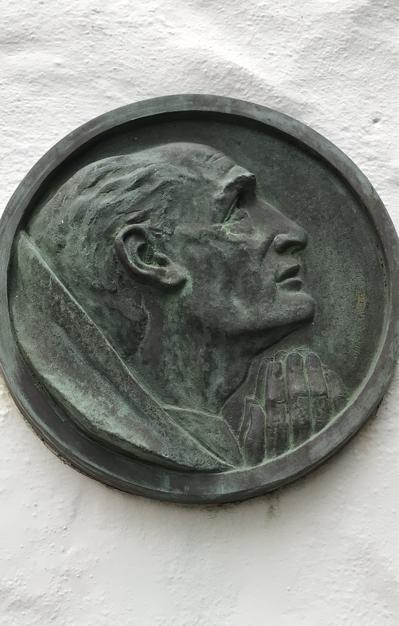
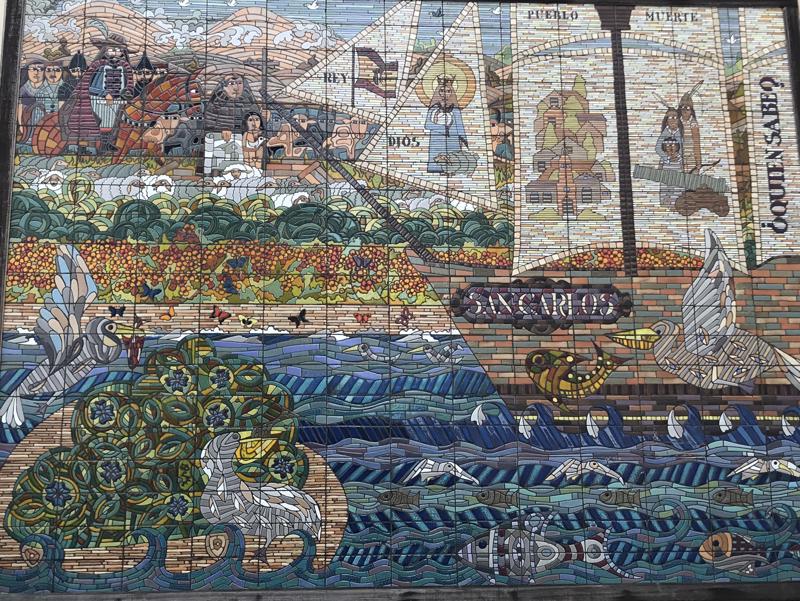

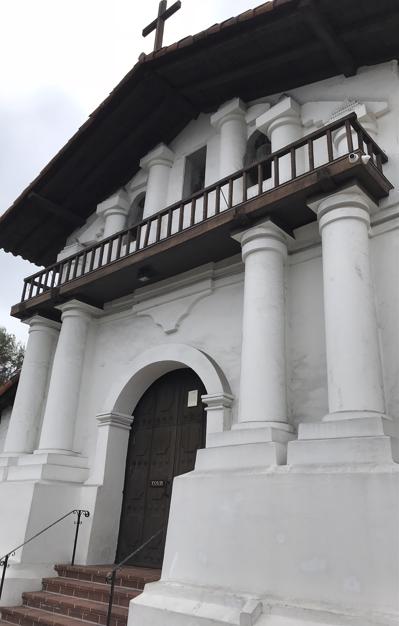
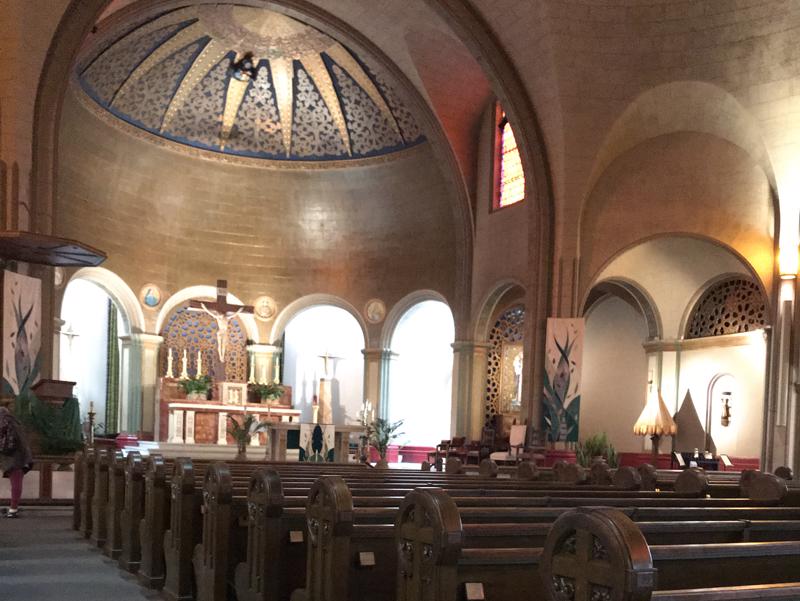
Franciscan Order, but was also commonly known as "Mission Dolores". The original Mission was a small structure dedicated on October 9, 1776, after the required church documents arrived.
The present Mission church, near what is now the intersection of Dolores and 16th Streets, was dedicated in 1791. At the time of dedication, a mural painted by native labor adorned the focal wall of the chapel. The Mission was constructed of adobe and was part of a complex of buildings used for housing, agricultural, and manufacturing enterprises . Though most of the Mission complex, including the quadrangle and Convento, has either been altered or demolished outright during the intervening years, the façade of the Mission chapel has remained relatively unchanged since its construction in 1782–1791.
What an amazing complex of buildings. Luckily we got in before it closed at 4:30.
As we walked up to take the F Street Car line back home we came across a Whole Foods. We decided to stop in for a bite to eat at their hot bar. Fantastic food for a great price. Mom and I sat and visited and once again laughed our heads off. What a great day!
Tomorrow is our last day before we head back to Calgary, so we will try to get a few places in that we haven't been to yet. Lets hope for the sun to come out!
1.
Year of Travel
2.
Sosua - Dominican Republic
3.
Our Adventures So Far...
4.
Beach Life
5.
Our Favourite Restaurants in Sosua
6.
Fun with Friends
7.
Sosua Continued
8.
Sun, Surf and Sand
9.
Samana Peninsula
10.
Sosua Highlights
11.
USA Road Trip
12.
Texas
13.
Texas
14.
Louisiana - NOLA
15.
Louisiana - NOLA
16.
Louisiana - NOLA
17.
Alabama
18.
Alabama to Tennesse
19.
Tennesse - Nashville
20.
Tennesse - Nashville
21.
Tennesse - Nashville
22.
Tennesse - Memphis
23.
Tennesse - Memphis
24.
Tennesse - Memphis
25.
Summer at Home
26.
Westcoast Adventures
27.
Europe
28.
Europe - Budapest
29.
Europe - Budapest
30.
Europe - Vienna
31.
Europe - Vienna
32.
Europe - Vienna
33.
Europe - Prague
34.
Europe - Prague
35.
Europe - Prague
36.
Europe - Berlin
37.
Europe - Berlin
38.
Europe - Berlin
39.
Europe - Salzburg
40.
Europe - Salzburg
41.
Europe - Salzburg
42.
Europe - Salzburg
43.
Europe - Salzburg
44.
Europe - Innsbruck
45.
Europe - Innsbruck
46.
Europe - Bad Ragaz
47.
Europe - Bad Ragaz
48.
Europe - Lindau
49.
Europe - Lindau
50.
Europe - Fussen
51.
Europe - Fussen
52.
Europe - Freising and Munich
53.
San Francisco
54.
San Francisco
55.
San Francisco
56.
San Francisco
57.
San Francisco
58.
San Francisco
59.
Canada Road Trip
60.
On the Road to Ontario
61.
Ontario - Thunderbay
62.
Ontario - Thunderbay
63.
Ontario - Thunderbay
64.
Ontario - Toronto
65.
Ontario - Ottawa
66.
Ontario - Ottawa
67.
Quebec - Montreal
68.
Quebec - Montreal
69.
Quebec - Montreal
70.
Quebec - Quebec City
71.
Quebec - Quebec City
72.
Quebec - Sainte Flavie
73.
New Brunswick - Bathurst
74.
New Brunswick - Shediac
75.
New Brunswick - Shediac
76.
Prince Edward Island - Charlottetown
77.
Prince Edward Island - Road trip
78.
Prince Edward Island - Charlottetown
79.
Prince Edward Island - More exploration
80.
Nova Scotia - Halifax
81.
Nova Scotia - Halifax
82.
Nova Scotia - Halifax
83.
Nova Scotia - Sydney
84.
Newfoundland - Channel-Port
85.
Newfoundland - Rocky Harbour
86.
Newfoundland - Rocky Harbour
87.
Newfoundland - St. John's
88.
Newfoundland - St. John's
89.
Newfoundland - St. John's
90.
Newfoundland - St. John's
91.
Newfoundland - St. John's
92.
Newfoundland - Travelling
93.
Nova Scotia - Sydney
94.
New Brunswick - Saint John
95.
Maine - Portland
96.
Massachessets - Cape Cod via Boston
97.
Massachusetts - Cape Cod
98.
Massachusetts - Cape Cod
99.
Pennsylvania - Clearfield
100.
Illinois - Chicago
101.
Illinois - Chicago
102.
Illinois - Chicago
103.
Heading Home
104.
Our Year at a Glance